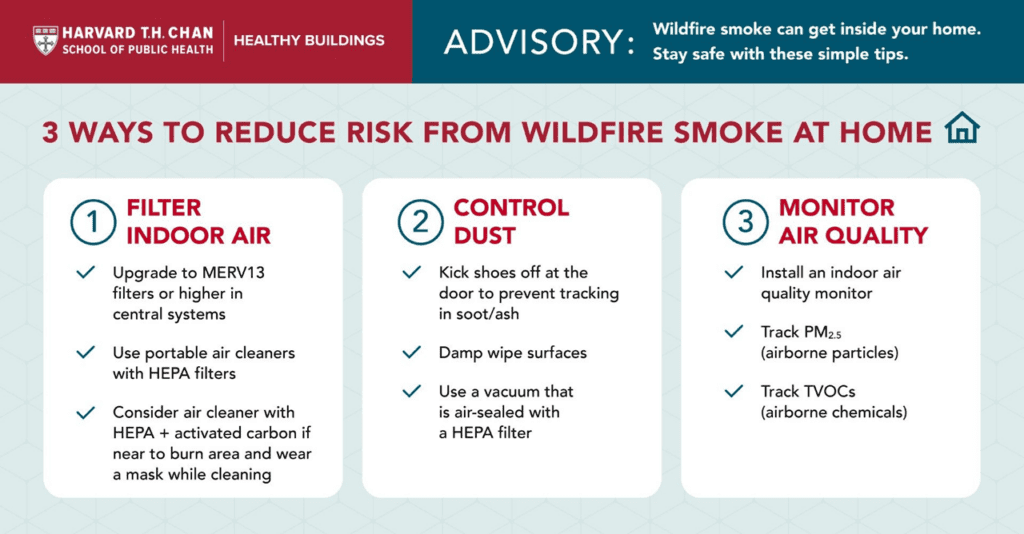Urban wildfires, like those in the Bay Area (2020), Boulder (2021), Lahaina (2023), and L.A. (2025), bring a devastating loss of life, homes, schools, businesses, and community. Urban wildfires release a mix of pollutants that can impact lung health, brain health, heart health, and immune system health. The impacts extend far beyond the immediate fire zones, as the urban wildfire emitted toxic particles and gases hundreds of miles from the flames. Outdoor pollution penetrates into homes, schools, and offices, even when doors and windows are closed. After the smoke has cleared, off-site mobilization of soot and ash can occur via surface water, and resuspension of dust from wind, cars, and trucks, can continue for many weeks and months.
There are a few steps people can take to reduce exposures in the home.
- Filter Indoor Air:
- Upgrade your HVAC system filtration to MERV13 filters or higher
- Utilize portable air cleaners equipped with HEPA filters
- If you reside near a burn area, consider using devices with both HEPA and activated carbon filters, and ensure you wear a mask while cleaning
- Control Dust:
- Minimize the introduction of soot and ash by removing shoes at the door
- Maintain cleaner surfaces by regularly damp-wiping them
- Use a vacuum with a HEPA filter that is also air-sealed
- Monitor Air Quality:
- Install an indoor air quality monitor in your home
- Track PM2.5 (airborne particles)
- Track TVOCs (airborne chemicals)

Resources:
How to interpret data from indoor air quality sensors
https://hbr.org/2023/11/its-time-for-companies-to-monitor-workplace-air-quality
Information on filters and portable air cleaners
Change out your filters after a smoke event

